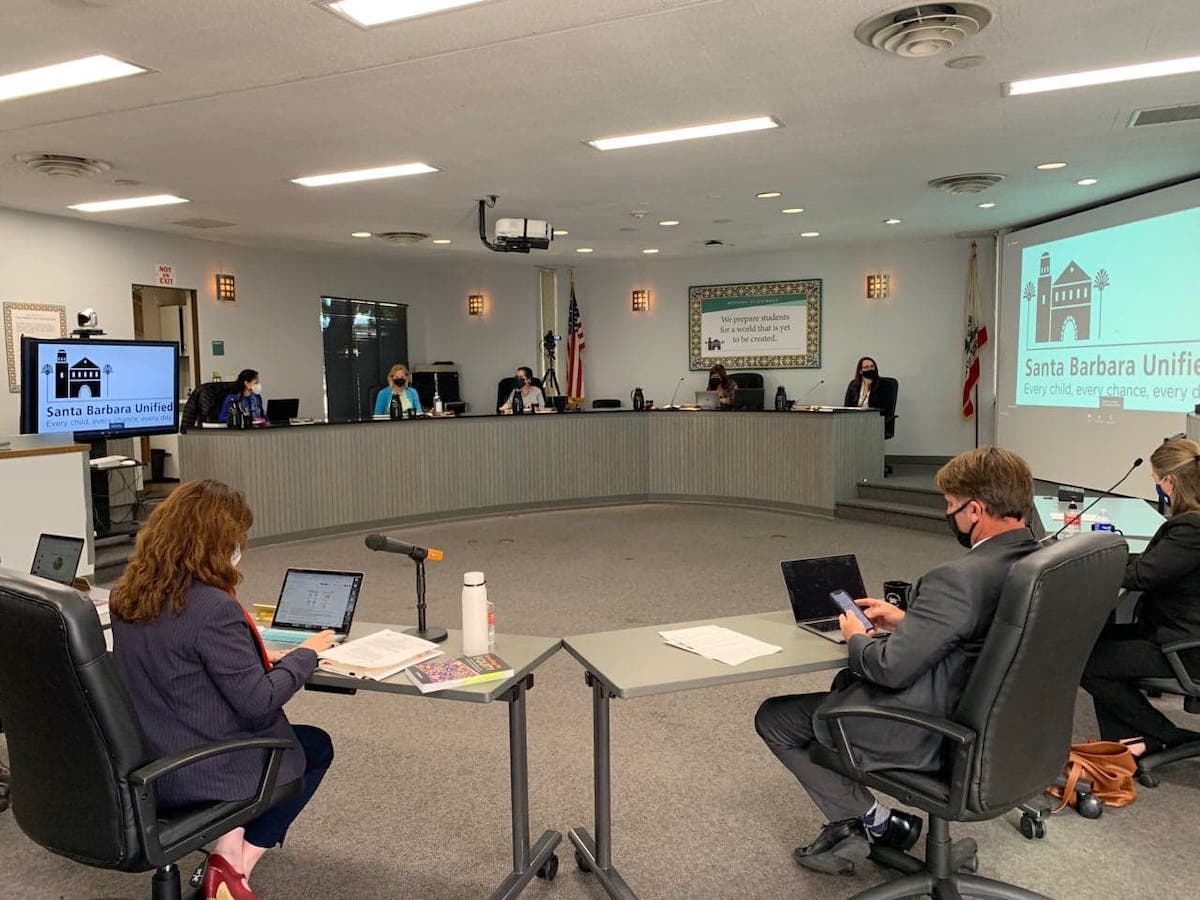Santa Barbara Unified Prepares to Reopen Secondary Schools
District Explores New Grading Policies

The Santa Barbara Unified School District on Tuesday approved the reopening of secondary schools in person once the county’s adjusted case rate drops into the red tier.
District elementary schools were able to reopen in a hybrid model March 1. For secondary schools to follow suit, the adjusted case rate has to either be less than seven cases per 100,000 or less than 10 per 100,000 once the state administers two million vaccines to those living in the state’s most vulnerable neighborhoods. Currently, the rate is looming just above reopening at 9.7.
Like the elementary hybrid model, the secondary model has alternating A and B cohorts in person on Mondays, Tuesdays, Thursdays, and Fridays. Wednesdays, however, are fully online for all cohorts. After discovering that deep cleaning of campuses doesn’t need to happen on Wednesdays, the boardmembers pressed why students couldn’t be on campus that day, too.
“Without the need for deep cleaning on Wednesdays, the logical next statement is then, ‘Why aren’t kids on campus?’” Board President Kate Ford said.
Shawn Carey, assistant superintendent of secondary education, explained that the district needs to keep Wednesdays closed for now to see how day-to-day operations go before figuring out how to bring the cohorts to campus an extra day.
GRADING
The board also heard a presentation from the Crescendo Education Group about changing district grade policy. Earlier in the pandemic, the district realized that the traditional 100-point letter grading system is inequitable not just during the pandemic, but even before.
Student grades can often be predicted based on their socioeconomic background or race. In Santa Barbara Unified, the disparities are clearly shown in the grades. In fall 2020, 76 percent of white elementary students earned 1s or 2s in three or more subjects, as compared to the 92 percent of their Latino peers earning the same grades. In secondary schools, 21 percent of white students earned one or more Ds or Fs, while 50 percent of Latino students earned the same.
“We would actually argue that schools, as we’ve inherited them, are designed to have achievement and opportunity disparities,” said Joe Feldman, CEO of Crescendo Education Group. “Grading is actually perpetuating the opportunity gaps without us even realizing it.”
He said grades perpetuate the achievement gap by rewarding students who have resources to learn and punishing those without, and it discourages students from genuinely learning because they are obsessed with obtaining their points in the class instead of understanding the material.
Feldman and his associate, Mark Boswell, said that a four-point system that puts more emphasis on students’ most recent progress rather than averaging their performance over an entire class is the more equitable approach.
The district paid $3,500 for the workshop on grading. The district will continue to explore ways to make its grading policy more fair for all students.
“We want to provide grades that are meaningful, and by meaningful, I mean fair, consistent, accurate, and equitable,” Carey said. “We need to be clear about what it is that grades are measuring in the first place. What is it that students need to know by grade level and subject?”


